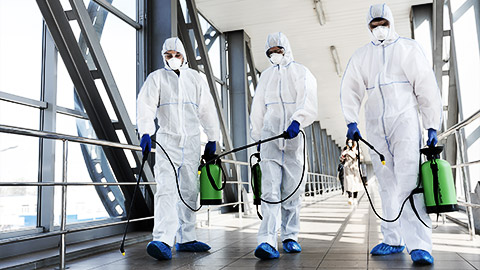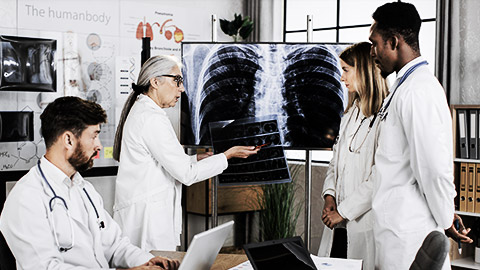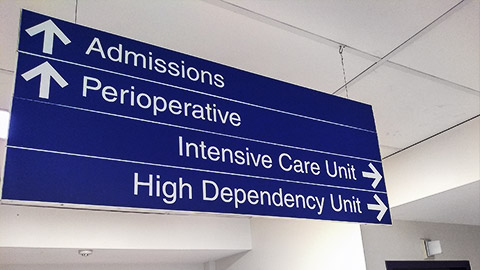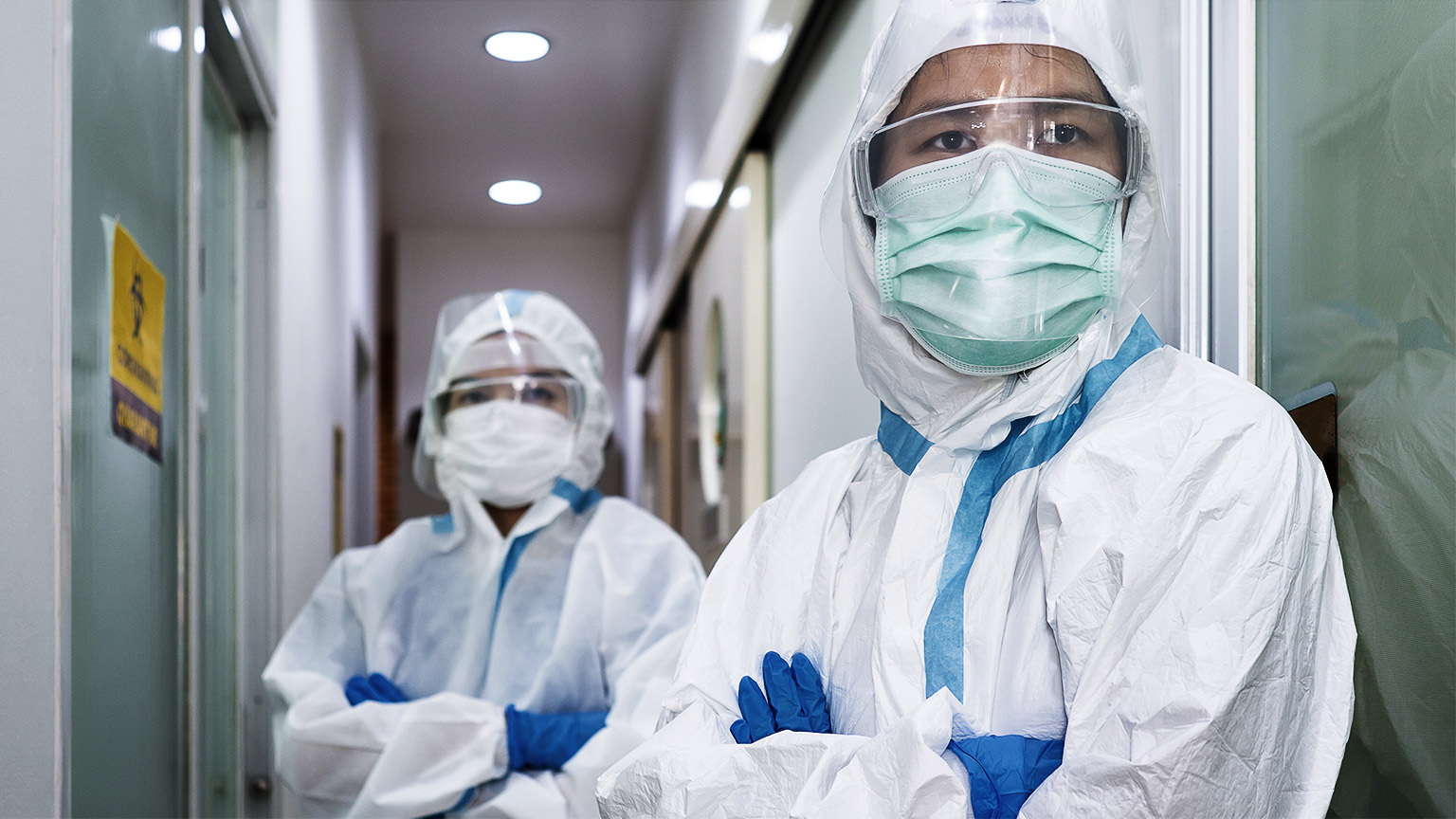In this section you will learn to:
- Identify and report potential and actual infectious risks and events, including notifiable diseases, to relevant entities.
- Monitor infection prevention and control work practices to ensure compliance with standards, policies and procedures.
- Regularly review and adjust work procedures and practices to improve infection prevention and control measures, considering the hierarchy of control.
- Provide feedback and information to the work group and stakeholders on positive indicators of infection control activity and performance, compliance, changes in work procedures and practices, and infection prevention and control activity outcomes.
- Respond to identified gaps in infection prevention and control measures to improve work procedures and practices and implement quality improvement strategies, or report to nominated personnel.
- Complete documentation and report on infection prevention and control risks, incidents or potential breaches in accordance with standards, organisational policies and procedures.
Supplementary materials relevant to this section:
Reading
- Reading F: The Hierarchy of Control and WHS
In the previous section of this Study Guide, you were introduced to specific hygiene procedures and necessary care. You also learned about the necessary precautions when it comes to waste management and asepsis. However, the responsibility for the prevention and control of healthcare-associated infections does not rest with the Infection Prevention and Control Team. It is an organisational responsibility, an integral component of patient-centred care, and it is the responsibility of all staff to ensure that it is embedded into every aspect of patient care all of the time.

Risk management
As a healthcare worker the possibility of incurring misfortune and loss is present. Risk management is a proactive approach, and its aim is to prevent or minimise harm. The implementation of a formal risk management process will identify potential problems and the potential for harm to patients. Once the risks are identified, actions are then planned to reduce the likelihood of the problem arising or to limit the harm caused.
‘The four key stages’
| Steps taken | Explanation |
|---|---|
| 1. Risk identification |
This stage involves:
The aim is to identify common problems/practices that have an impact on a large number of patients or rarer problems which can cause severe infection or death. |
| 2. Risk analysis |
This stage estimates the likely consequence that the identified risks might have on the patient. You may use the following key questions to analyse the risks involved:
|
| 3. Risk control |
|
| 4. Risk monitoring |
|
Recording and documenting risks and incidents
At first, your supervisor or other HCWs will ask for a clear description of the incident with as much detail as possible. This will help them assess whether or not the incident is notifiable and the need for a follow-up investigation. The following information has been recommended by Safe Work Australia (2015):
| What happened? |
|
| When did it happen? | Date and time |
| Where did it happen? |
|
| What happened? | Detailed description of the notifiable incident |
| Who did it happen to? |
|
| How and where are they being treated (if applicable)? |
|
| Who is the person conducting the business or undertaking (there may be more than one)? |
|
| What has/is being done? | Action taken or intended to be taken to prevent recurrence (if any). |
| Who is to be notified? |
|
Reporting risks and incidents

A safety reporting process will help you identify health and safety issues, why they occurred and how to fix them.
Some things should be encouraged within the healthcare facility and its workers:
- Injuries, illnesses and fatalities
- Near misses
- Damaged or faulty equipment
- Housekeeping issues
- Health and safety hazards
- Suggestions for improvement
By encouraging the reporting of hazards, near misses, and maintenance problems, you can help stop incidents from occurring. You must report any health and safety issues that you may come across in order to prevent infection this can be done through the following individuals:
- Supervisor: this person would be a HCW’s first point of contact depending on the assessment of the risk.
- General practitioners: serves as a specialist advisor and takes a leading role in the effective functioning of the infection and prevention control (IPC) team. In allied health a GP might not always be present, however we need to keep in mind that allied health practitioners often work within a multidisciplinary health team. A GP might refer a patient to the allied health practice, that’s when you are required to work alongside the GP in order to cater to the needs of their patients. For example, a patient would be referred to a sonography (falls under allied health profession) service such as an ultrasound through her GP. In the case an infection has been identified the GP can be notified if they referred the patient.
- Health care professional: these would include the nurses, midwives, pharmacists, and would work alongside the GP assisting them in annual plans, policies and programmes for the prevention of infections.
- Carer/guardian: informing the patient’s carer if there are any infectious risks that might be harmful not just to the patient but also their surrounding members.
- Responsible authority: such as the relevant health department for each state and territory
The risk analysis matrix below will assist HCWs and provide them with the input into evaluation and decision making on whether the risks need action, and what the most appropriate risk mitigation strategies and methods may be.
| Likelihood | Consequences | ||||
|---|---|---|---|---|---|
| Insignificant | Minor | Moderate | Major | Catastrophic | |
| Almost certain | Medium | Medium | High | Extreme | Extreme |
| Likely | Medium | Medium | High | High | Extreme |
| Possible | Low | Medium | Medium | High | High |
| Unlikely | Low | Low | Medium | Medium | High |
| Rare | Low | Low | Low | Medium | Medium |
| Low risk | Manage by routine procedures. | ||||
| Medium | Manage by specific monitoring or audit procedures. | ||||
| High risk | This is serious and must be addressed immediately. | ||||
| Extreme risk | The magnitude of the consequences of an event, should it occur, and the likelihood of that event occuring, are assessed in the context of the effectiveness of existing | ||||
Take a look at the following example of risk management for a confirmed case of chicken pox in a maternity ward located at a public hospital.
Eliminating risk
In this situation, it is not possible to eliminate the risk, so it must be managed.
Identifying risk
In this case, the risk has been identified as a known case of chicken pox that may have been transmitted to other patients in the healthcare facility.
Analysing risks
One source of the risk is that the patient was sharing a room with multiple other patients. The infected patient is identified as high-risk due to walking around the ward too often, she also had some constipation.
Evaluating risks
The balance of likelihood and consequences identify this as a ‘very high risk’ situation requiring immediate response.
Treating risks
Immediate measures include: placing the patient in a single patient room with their own bathroom; implementing contact precautions including the appropriate wearing of PPE; where possible, allocate clinical equipment to this patient for the duration of the admission or if not possible, ensuring shared clinical equipment is appropriately cleaned and disinfected before re-use; and limiting patient movement and intensifying routine environmental cleaning, including daily disinfection of the patient room and bathroom and twice daily disinfection of frequently-touched surfaces. All healthcare workers should be provided with education about infection prevention and control strategies for chicken pox.
Other measures include conducting a lookback investigation to identify all patients who had shared a room, bathroom or toilet facility with the infected patients for more than 24 hours. Any patient who is still in the healthcare facility should be placed into single rooms with contact precautions, screened for chicken pox and provided with information about chicken pox. Any patient who has since been discharged or transferred to another facility should be sent a letter advising them to seek screening for chicken pox, and the facility or general practitioner should be notified. An alert should be placed in their medical history so they can be placed into contact precautions and screened if they are readmitted within 12 months.
Monitoring
The healthcare facility should implement a surveillance program to monitor the development of transmission of chicken pox. Healthcare workers adherence to infection prevention strategies should also be monitored.
The healthcare facility can also review and monitor their antimicrobial prescription/use trends and use audit systems to identify inappropriate antimicrobial use.
Self Reflection
Take a moment to reflect on the COVID-19 pandemic, think of classifying its course under eliminating, identifying, analysing, treating and monitoring. How do you think that was done? Would you as a health care worker done anything different?
Staff need to be familiar with their statutory responsibilities in relation to monitoring for and reporting disease outbreaks to the relevant State or Territory authorities, and responding with the institution of appropriate precautions at the practice level. Systems must be in place to ensure the timely reporting of notifiable diseases to the relevant State or Territory health department.
You need to remember that notification of outbreaks apply to operators of workplaces, educational settings, or residential care facilities. All outbreaks of COVID-19 should be notified to the Department of Health using the communicable disease outbreak notification form or by calling 1300 651 160.
Let’s take a look at an example of a notifiable disease. The table below describes specific information on Measles.
| Definition/symptoms | Measles is a highly contagious disease, spread by the droplets from when an infected person coughs and sneezes. Symptoms include a red rash and fever. In some people, it can be very serious. Measles is prevented by vaccination. It can affect non-immune people of all ages. |
| Disease type |
Vaccine-preventable Measles can be prevented with vaccination. If you're eligible, you can get measles vaccines for free under the National Immunisation Program |
| Clinical features |
|
| Mode of transmission | Measles transmission is airborne by respiratory droplet nuclei spread or by direct contact with infected nasal or throat secretions |
| Diagnosis | The diagnosis should be confirmed by demonstration of anti-measles IgM antibody, detection of measles RNA by polymerase chain reaction (PCR) techniques (if available) or by viral culture. |
| Notifiable disease | Yes |
| Notification requirements | Measles is an ‘urgent’ notifiable condition and must be notified to the relevant department of Health by medical practitioners and pathology services immediately by telephone upon initial diagnosis (presumptive or confirmed). Pathology services must follow up with written notification within 5 days. |
| Incubation period | Approximately 10 days, but varies from 7 to 18 days from exposure to the onset of fever. It is usually 14 days until the rash appears. |
Staff education and training

The owners of the health care facilities are responsible for the health and safety of their patients, residents, staff, and visitors. They should ensure that all staff and HCWs have a clear understanding of their responsibilities in relation to IPC. They should apply standard infection control precautions for the care of all patients at all times. It is important to emphasise that it is also the responsibility of each individual member of staff employed in these facilities to be familiar with, and adhere to IPC policies and procedures for their own safety and for the safety of their patients and visitors. Each community health care facility should have a designated person who should be responsible for overseeing that all IPC programmes are implemented, coordinated and monitored as per local guidelines. It is essential that they should undertake specific training in IPC so that this role can be performed efficiently, and effectively.
Policies and procedures
Appropriate IPC policies and procedures should be easily accessible (in hard copy and/or electronic format) and should be updated on an annual basis or earlier, if required.
They must be clearly labelled with issue and review dates. Adequate resources should be made available to staff to implement these policies and procedures effectively. The policies and procedures should address the following key areas:
- Hand hygiene.
- Use of Personnel Protective Equipment.
- Aseptic technique for clinical procedures.
- Decontamination of re-usable items and equipment.
- Environmental cleaning and management of spillage of blood/body fluids.
- Waste management.
- Safe handling and management of sharps injuries.
- Safe handling of linen.
- Wound management.
- Antimicrobial prescribing guidelines.
Communication
Health care facilities should ensure that the patients/clients and their carers/visitors should be given relevant information on IPC so that they can take appropriate precautions to reduce the risk of infection to themselves and to others. In addition, sharing of information between primary or community care and secondary care in patient transfers is an essential aspect in the prevention and control of HCAIs. HCWs have a responsibility to ensure that all relevant information is transferred with any patient moving within/between health care facilities and social services, this must include information on any health care associated infections (HCAIs) and this should be accompanied by the appropriate relevant documentation.
Training and education
All members of staff must be familiar with and receive regular training on content of policies and procedures that are relevant and applicable to their area of work. It must be part of the induction program for all new staff. IPC training should also be included in all ongoing staff training programs. Records of all IPC training should be maintained, and should be stored and readily available for review and for inspection if required. Mandatory compliance with all best practice IPC policies and procedures should be included in job descriptions, personal development plans, and appraisal exercises for all staff.
Identification
Occasionally a patient may present at the practice, and later be known to have a transmissible disease (e.g., tuberculosis). State or Territory health authorities need to be notified to enable tracing of contacts of the infected patient. In order to initiate appropriate counselling, quarantine and post-exposure prophylaxis, practices may need to identify staff on duty and other patients present at the time who may have been exposed to the infectious patient and be at risk. This may entail checking staff rosters, staff immunisation records and patient appointment records.
Monitoring
General practices and other office and community-based practices need to have systems in place that allow for monitoring threats of outbreaks (measles, bioterrorism (anthrax) and emerging diseases such as influenza or COVID-19. To ensure that practices remain up to date with information, it is useful for a nominated staff member to have the responsibility for checking relevant federal and state/territory websites for relevant guidelines as mentioned below:
Emergencies and pandemics
- Australia’s health emergency preparedness and response resources and fact sheets, Australia Government Department of Health, available at www.health.gov.au ; specific information on MERS is also available from this website
- Australian health management plan for pandemic influenza, Australian Government Department of Health 2009, available at www.health.gov.au
- The RACGP Pandemic flu kit, available at www.racgp.org.au
Communicable and infectious diseases
- Australian immunisation handbook, Australian Government Department of Health 2013, available at https://www.health.gov.au/topics/immunisation
- The blue book: guidelines for the control of infectious diseases, Communicable Disease Prevention and Control Unit Victorian Department of Health, available at www.health.vic.gov.au
- Communicable Diseases Network Australia, available at www.health.gov.au
Infection control in healthcare
- Australian guidelines for the prevention and control of infection in healthcare, National Health and Medical Research Council, 2010, available at http://www.nhmrc.gov.au
- Information on safety data sheets, Safe Work Australia, available at www.safeworkaustralia.gov.au
- Travel health information, Australian Government Department of Health, available at www.health.gov.au

It is useful to think of triage in general practices and other office- and community-based practices in three stages:
- Routine questions asked of all patients.
- Questions asked when the patient indicates signs or symptoms consistent with an infectious disease.
- Questions asked of patients when the practice suspects a localised outbreak of an infectious disease (e.g., measles) or when the practice is part of a response to a (suspected) pandemic.
Staff need to know how and when to use standard and transmission-based precautions to protect themselves and other patients, especially in the event of a disease outbreak. Staff also need to know how to explain to patients why precautions are being taken and to reassure patients that precautions are for everyone’s benefit.
Booking appointments

Reception staff at the clinic can ask a general question when booking appointments for patients regarding the reason for the consultation. However, patients need to understand the reason that the question is being asked. An example of such a question is: ‘So that our doctors can provide the best possible care, can you give me an indication of the nature of your visit?’.
It is important to tell the patient why you are asking questions: ‘Would you mind if I asked a few more questions, as the information will help us care for you?’ Then, if the patient has not already told you, ask:
- Do you have a fever?
- Do you have a rash?
- Do you have a cough?
- Do you have diarrhoea?
- Have you been overseas recently and if so, where?
- Have you recently had contact with an infectious disease?
The answers should be recorded and conveyed to the doctor.
Suspected disease
In this situation, it may be appropriate for staff to say to patients, ‘Our doctors have asked us to ask all patients the following questions’ and then ask relevant questions. For example:
- Have you been exposed to anyone with chicken pox in the past 3 weeks?
- Have you recently returned from overseas?
If the patient answers yes, staff need to consider the implementation of appropriate precautions when the patient attends.
Such precautions should be part of planning and policies already in place. When booking an appointment, consider booking appointments for patients with potentially infectious diseases at a time when there are fewer patients present (e.g., at the end of a session). Consider referring such patients to a designated doctor at an external clinic. Depending on the policies put into place at the clinic you work for there might be instances where you may request the patient to bring in a clearance letter from the referred doctor. Let’s look at an example, where a patient might be referred to an Optometrist after they’ve had conjunctivitis, a highly contagious disease. In this occasion, you may have to request for the clearance certificate prior to accepting the patient.
Practice signage

As mentioned previously if you are a practice manager or a senior HCW, you must have infection prevention and control signage across your clinic, for example:
- Posting a sign at the entrance to the practice and another at reception requesting patients presenting with symptoms of infection to inform the receptionist
- Displaying information on the practice notice board, the practice website or inserting it in the practice information sheet
- Recording a telephone message for patients on hold, asking them to let the receptionist known if they think they may have an infectious disease.
This will not only help prevent infection but also regularly remind HCWs of the protocols they need to follow and adhere to in order to keep themselves safe from infection.
Below you will be introduced to the POPGUNS Triage Process, which is a guide on Prioritisation of patients: A guide to urgency for non-clinical staff. It is almost similarly and closely followed in all states and territories across Australia. The document also provides substantial visual information when it comes to managing common scenarios faced by reception staff at health care facilities. Rather than having immense information dumped on HCWs its best to have this visual information charts across the healthcare facility as its easy and quicker to understand protocols.
The best way to fix a hazard is to get rid of it altogether. This is not always possible, but the higher management of the clinic should try to make hazards less dangerous by looking at the following options (in order from most effective to least effective):
- Elimination: sometimes hazards - equipment, substances or work practices - can be avoided entirely (e.g., having an isolation room for patients that are deemed to be having an infectious disease).
- Substitution: sometimes a less hazardous thing, substance or work practice can be used (e.g., Using sterile gloves instead of non-sterile ones depending on the situation).
- Isolation: separate the hazard from people, by marking the hazardous area, fitting screens or putting up safety barriers (e.g., barriers and/or boundary lines can be used to separate areas where an infected person is being kept, or even simply having a ‘floor is wet’ sign when timely cleaning is taking place at the clinic).
- Engineering controls: engineering controls involve using a physical control measure, such as a mechanical device or process, to change the characteristics of a task. The best engineering controls for your workplace will depend on the tasks your workers carry out. (e.g., using tools fitted with local exhaust ventilation or dust extraction systems to absorb any infectious microorganisms such as high-tech humidifiers that absorb microbes).
- Administrative controls: if you’ve worked through the hierarchy of control measures and risk remains, you must minimise the risk by implementing administrative controls. (e.g., ensure the HCWs are informed and trained well enough for safe use, storage, handling and disposal of equipment).
- Using personal protective equipment (PPE): If risks remain after the options have been tried, it may be necessary to use equipment such as safety glasses, gloves, helmets and earmuffs. PPE can protect you from hazards associated with jobs such as handling chemicals or working in a noisy environment (e.g., the HCWs need to select the correct PPE such as gloves, aprons, face shields and masks – incorrect PPE will give the staff a false sense of security and put the HCWs at great risk).
Sometimes, it will require more than one of the risk controls measures above to effectively reduce exposure to hazards. Employers and managers have a responsibility under work health and safety laws to protect their staff from injury at work. In conclusion, all members of the practice team need to be educated about their role in preventing the spread of infection. Education includes teaching the principles of infection prevention and control, checking competency (where a person competent to check observes others), and performing ongoing auditing and education of staff.
Reading
Reading F: The Hierarchy of Control and WHS
Reading F explains the sequence of steps that should be considered when evaluating ways to remove or reduce a discovered risk.

This section of the Study Guide reviewed organisation policies and procedures that need to be strictly followed at all health care facilities. You were introduced to the recording, documenting and reporting of risks and incidents at the facility. We also looked at the management of work processes used to prevent and control infection. Subsequently, infection risks and control measures were also considered when it came to making bookings and welcoming patients at the clinic. Lastly, we looked at the hierarchy of control measures from most to least preferred and its application to infection prevention and control.
